The essential underpinnings are exactly what we’d expect. That boxer engine is identical to the version seen in the R 1300 GS, GS Adventure, and R 1300 R, putting out a claimed 145 hp and 110 lb.-ft. of peak torque. Those numbers are 9 hp and 4 lb.-ft. up on the old 1252cc R 1250 RT, but the relatively small change in output underplays how much the engine has changed. It’s essentially a clean-sheet design, with the transmission shifted from behind the engine to a new spot underneath it, making for a shorter, lighter powertrain. Not only is the bore bigger, but the stroke is 3mm shorter than before, making this a completely new generation of BMW boxer. As on the R 1250, cooling is via a combination of air and water, and BMW’s ShiftCam variable valve timing and lift system, which swaps between two different intake cam profiles as revs rise, is fitted as standard.
The chassis, too, follows the new-age thinking that was laid out in the R 1300 GS, ditching the tubular-steel design that’s been used for generations of BMW boxers in favor of a main frame made of pressed and welded sheet steel, with a bolt-on, die-cast aluminum rear frame supporting the seat.
Up front, there’s BMW’s Evo Telelever suspension, as on the GS, which builds on decades of Telelever experience and combines the best elements of two previous versions of the system. Like earlier Telelever setups, the fork is telescopic but the springs and dampers are not housed inside them, instead there’s a single coil-over unit, actuated by a wishbone connected between the sliding section of the fork and the chassis to locate the front wheel. The use of that wishbone means that as the suspension compresses, the fork’s rake angle changes, so the system needs to be able to flex at the top where the fork and steering head meet. On BMW’s older touring models that flex came via joints at the top of each fork leg, where they attach to the triple clamp, but these diminished steering feel slightly. So for sportbikes with Telelever, BMW has mounted the fork firmly in the triple clamp and introduced a spherical bearing on the steering stem itself to let the entire triple clamp move. The downside of that system was that the bars also changed angle as the suspension compressed—not a problem for short, sport bars, but something that would have been unacceptably amplified with the taller, pulled-back bars of a tourer.
Evo Telelever solves the problem by combining the sport-style system, where the fork is firmly mounted in the triple clamp, with bars that are separately mounted on their own bracket that rotates in the steering stem but doesn’t change pitch as the suspension compresses. A stainless steel flex plate connects the bar brackets to the triple clamp, so there are no hinges or joints to corrupt the feedback from the fork to the handlebars. At the back is the familiar Evo paralever setup with BMW’s usual shaft drive encased in a single-sided swingarm.
On the RT, the suspension comes as standard with BMW’s Dynamic ESA electronic suspension, with the option of upgrading to a Dynamic Chassis Adaption (DCA) system that can change the chassis setup at the touch of a button between a sport mode (raising the rear to increase the steering rake) and a more relaxed touring setting that drops the rear of the bike and slows the steering response.
Other options include BMW’s Riding Assistant, which adds radar for Active Cruise Control (ACC) as well as Front Collision Warning (FCW), Rear End Collision Warning (RECW), and Lane Change Warning (LCW) systems. The vast array of options also includes audio packages, a variety of different seats (all heated), and the ability to bolster the standard bike’s trio of riding modes with an additional two settings by selecting the Riding Modes Pro Package.
As on the other R 1300 models, the RT also gets the option of BMW’s ASA automated manual transmission, which replaces a conventional clutch and shifter with two electromechanical actuators and a computer to operate them. There’s a fully automatic “D” mode and a manual-shift “M” setting, which lets you change gear yourself using a familiar-feeling foot shifter, even though it’s connected only electronically to the transmission.
Luggage is, of course, another major consideration for a tourer, and the RT offers a huge array of options. As standard, the bike gets side cases (each 27 liters in size), which can be upgraded to Vario cases that can be adjusted from 27 liters to 33 liters. There are also two optional top cases—either 39 or 54 liters in capacity, the latter including a heated passenger backrest. All the luggage is electronically lockable, with internal lighting in the side cases and a USB-C charge port in the left case. Another USB-C port is tucked into the fairing, inside an actively ventilated compartment specifically designed for smartphone charging.
That smartphone can, of course, be connected to a massive 10.25-inch TFT dash, which includes built-in map-based navigation and a “connectivity hub” to help control accessories from your phone and the audio system to heated riding gear and even expected future accessories like smart glasses.
Given the size and equipment level of the RT, its claimed curb weight of 619.5 pounds seems quite reasonable, and is barely any heavier than the 615-pound model it replaces. It’s also substantially less than the 756-pound K 1600 GT, and since the new 1300cc boxer twin is only 15 hp shy of the K 1600’s 160-hp inline-six engine, the R 1300 RT offers a better power-to-weight ratio than its bigger sibling.
BMW lists four versions of the bike as well as an array of options packages. The entry level is in Alpine White with a brushed steel muffler. The next version is a Triple Black model in metallic black, with a dark chrome exhaust and sports screen as well as forged rather than tubular handlebars. The Impulse model comes next, in metallic blue with the dark chrome exhaust, forged handlebars, variable wind deflectors, and a brushed aluminum fuel tank. Finally, there’s the Option 719 Camargue at the top of the range, in Blue Ridge Mountain metallic paint with hand-painted pinstripes, with the a chrome exhaust, forged handlebars, variable wind deflectors, special Option 719 wheels, and a package of milled aluminum bolt-on parts.










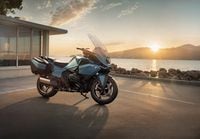
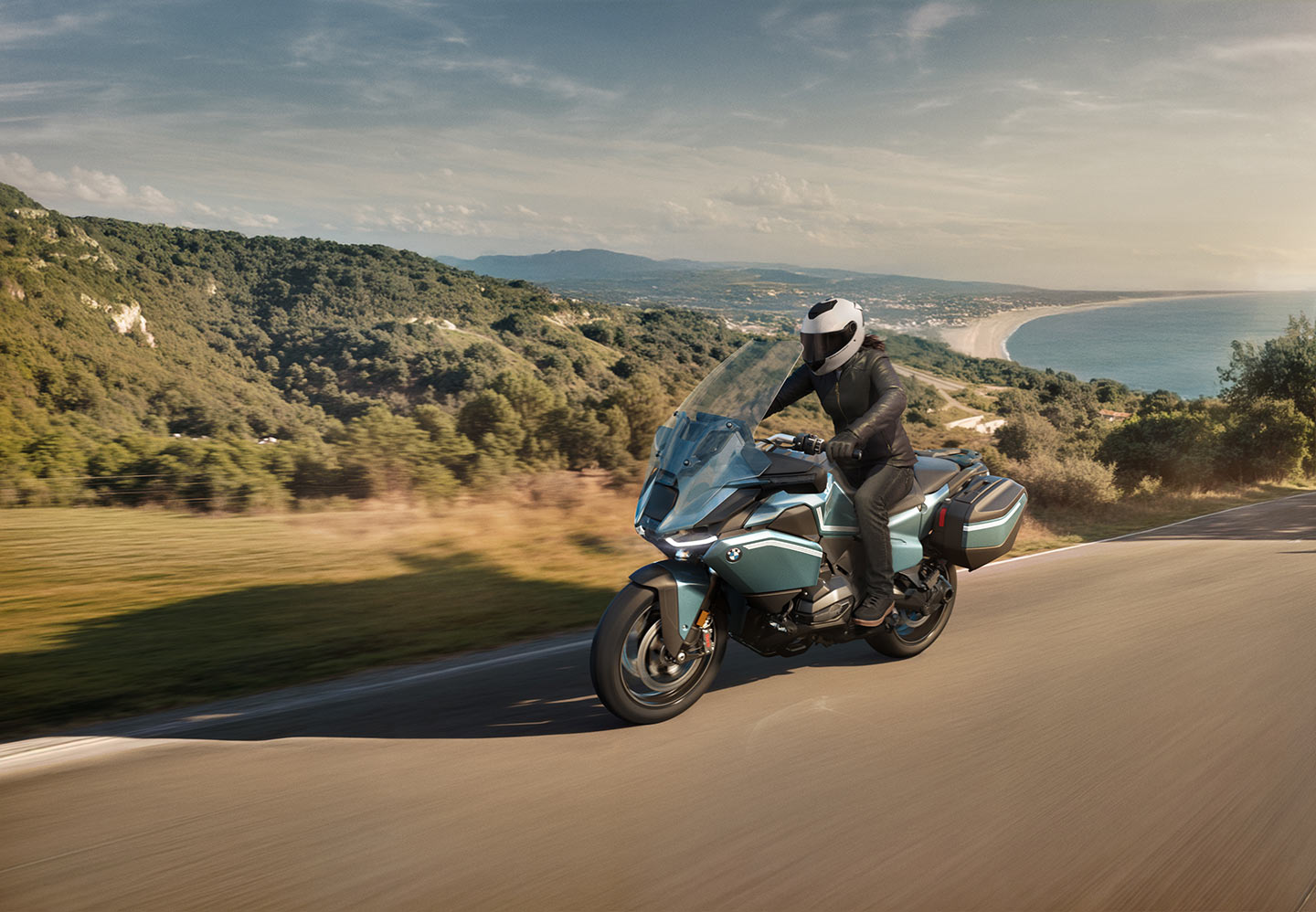

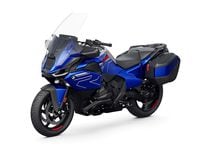
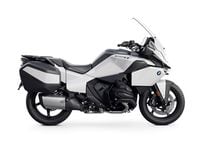
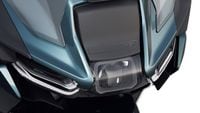
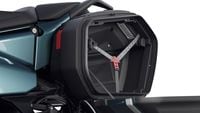
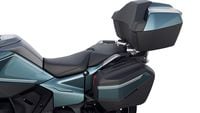
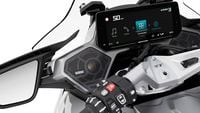
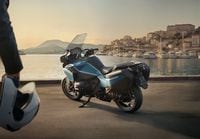
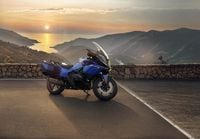
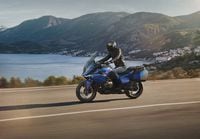
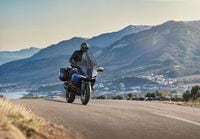
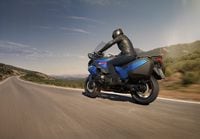
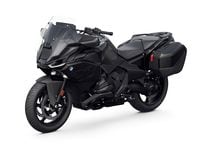
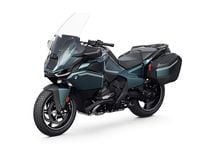
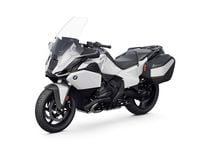
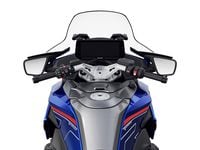
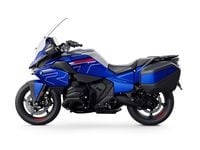
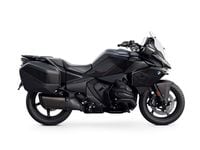
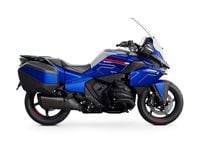
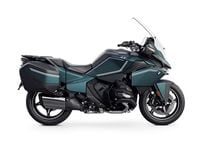
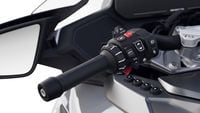
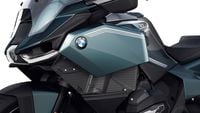
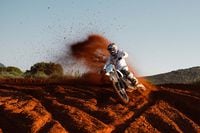
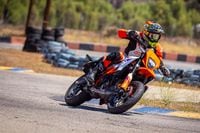
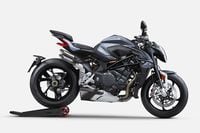
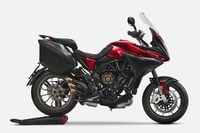
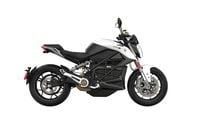
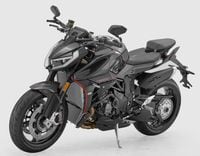




/cloudfront-us-east-1.images.arcpublishing.com/octane/URQMNYZZ6ZBM5LXGREBV3Y72OM.jpg)
/cloudfront-us-east-1.images.arcpublishing.com/octane/XH2ETEU4NVGDFNQO2XT2QQS5LU.jpg)
/cloudfront-us-east-1.images.arcpublishing.com/octane/DUGAQC2GQJCXFILEECQK2Q6T7I.jpg)
/cloudfront-us-east-1.images.arcpublishing.com/octane/4OGCCVR7WZGYDOWK4CGDTHXITA.jpg)
/cloudfront-us-east-1.images.arcpublishing.com/octane/GQV7Y6XT6FGZDIXO4P2IVJNSYE.jpg)
/cloudfront-us-east-1.images.arcpublishing.com/octane/X47GL62AXNALRHQLLBELY5WRMY.jpg)
/cloudfront-us-east-1.images.arcpublishing.com/octane/7OY2GP3FWFEDVEMDSLNGM6PZRM.jpg)
/cloudfront-us-east-1.images.arcpublishing.com/octane/Y3XYCFONBBBAHN6BWJDTWDY3FE.jpg)
/cloudfront-us-east-1.images.arcpublishing.com/octane/P3DLTISFGJA43L5QXVH7365UNY.jpg)
/cloudfront-us-east-1.images.arcpublishing.com/octane/H6FFG4YQMREO3DTADIJMECNS7Y.jpg)
/cloudfront-us-east-1.images.arcpublishing.com/octane/QCUUDRRAIFHDDGB5OTZVKUS554.jpg)
/cloudfront-us-east-1.images.arcpublishing.com/octane/RBDRR2OHFFBPRNXW6V3FN2SNAM.jpg)
/cloudfront-us-east-1.images.arcpublishing.com/octane/EFFSPCZVBBCMTNGVEQMB7NNKIU.jpg)
/cloudfront-us-east-1.images.arcpublishing.com/octane/5GP3PUGFKVGUVCEYG4ZBDYLNBE.jpg)